
Home - Search - Browse - Alphabetic Index: 0- 1- 2- 3- 4- 5- 6- 7- 8- 9
A- B- C- D- E- F- G- H- I- J- K- L- M- N- O- P- Q- R- S- T- U- V- W- X- Y- Z
STS-3
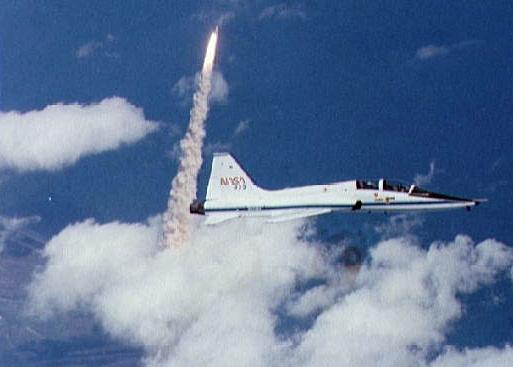
STS-3
Air-to-air views of STS-3 launch from T-38 chase aircraft
Credit: NASA
AKA: Columbia;OSS-1. Launched: 1982-03-22. Returned: 1982-03-30. Number crew: 2 . Duration: 8.00 days.
Payloads included Office of Space Science (OSS) experiments, Monodisperse Latex Reactor (MLR), Electrophoresis Verification Test (EEVT), Plant Lignification Experiment.
Orbits of Earth: 129. Distance traveled: 7,081,113 km. Orbiter Liftoff Mass: 106,782 kg. Orbiter Mass at Landing: 93,924 kg. Payload to Orbit: 10,301 kg. Payload Returned: 10,301 kg. Landed at: Runway 17 dry lake bed at White Sands Missile Rang. Landing Speed: 407 kph. Touchdown miss distance: 332 m. Landing Rollout: 4,187 m.
NASA Official Mission Narrative
Mission Name: STS-3 (3)
COLUMBIA (3)
Pad 39-A (15)
3rd Shuttle mission
3rd Flight OV-102
Extended mission
2nd RMS Mission
1st White Sands landing
Crew:
Jack R. Lousma (2), Commander
C. Gordon Fullerton (1), Pilot Backup
Crew: (after STS-3, backup crews were no longer named)
Thomas K. Mattingly (1), Commander
Henry W. Hartsfield (0), Jr., Pilot
Milestones:
OPF - Nov. 26,1981
VAB - Feb. 3, 1982
PAD - Feb, 16, 1982
Payload:
OSS-1,DFI(3),MLR,EEVT,HBT,SSIP(x1),GAS(x1)
Mission Objectives:
Demonstrate safe re-launch and safe return of the orbiter and crew. Verify the combined performance of the entire shuttle vehicle - orbiter, solid rocket boosters and external tank.
Payloads included the 8,740lb Office of Space Science (OSS-1) Pallet consisting of the Plant Lignification Experiment, the Plasma Diagnostic Package (PDP), the Vehical Charging and Potential (VCAP) experiment, the Space Shuttle Induced Atmosphere experiment, the Thermal Canister experiment, the Solar Flare X-Ray Polarimeter, the Solar Ultraviolet and Spectral Irradiance Monitor (SUSIM), the Contamination Monitor Package and the Foil Microabrasion Package. Also in the payload bay was the 11,048lb Development Flight Instrumentation (DFI) Pallet and the 448lb Aerodynamic Coefficient Identification Package (ACIP).
The crew compartment housed the Monodisperse Latex Reactor (MLR) experiment and the Heflex Bioengineering Test (HBT) experiment.
Launch:
March 22, 1982, 11:00:00 a.m. EST. Launch delayed one hour due to failure of heater on nitrogen gas ground support line. Launch Weight: 235,415 lbs.
Orbit:
Altitude: 147nm
Inclination: 38.0 degrees
Orbits: 130
Duration: Eight days, zero hours. Four minutes, 46 seconds.
Distance: 3,334,904 miles
Hardware:
SRB: BI-003
SRM: 003SW(SPM)
ET : 4/SWT-3
MLP: 1
SSME-1: SN-2007
SSME-2: SN-2006
SSME-3: SN-2005
Landing:
March 30, 1982,9:04:46 a.m. MST, Runway 17, Northrup Strip, White Sands, N.M. Rollout distance: 13,737 feet. Rollout time: 84 seconds. Landing site changed from Edwards to White Sands due to wet conditions on Edwards dry lake bed landing site. High winds at White Sands resulted in one day extension of mission, Some brake damage upon landing and dust storm caused extensive contamination of orbiter. Orbiter returned to KSC April 6, 1982. Landing Weight: 207,072 lbs.
Mission Highlights:
Testing continued of Space Shuttle systems for qualification for operational flights. Testing of remote manipulator system and measurements of thermal response of orbiter in various attitudes to sun conducted. Get Away Special test canister and Spacelab pallet-mounted experiments for NASA's Office of Space Science- 1 (OSS-1) carried in payload bay. 0SS-1 obtained data on near- Earth space environment, including contamination (gases, dust, etc.) introduced into space by orbiter itself. Other experiments: Monodisperse Latex Reactor (MLR), Electrophoresis Equipment Verification Test (EEVT), Heflex Bioengineering Test (HBT) and first Shuttle Student Involvement Program (SSIP) experiment. Problems encountered: space sickness, malfunctioning toilet, thermostat difficulty and unexplained static interfering with crew sleep. Auxiliary power unit registered overheating during ascent, but functioned properly during descent. Three communications links lost.
More at: STS-3.
Family: Manned spaceflight. People: Fullerton, Lousma. Country: USA. Spacecraft: Columbia. Projects: STS. Launch Sites: Cape Canaveral. Agency: NASA, NASA Houston.
 | STS-3 Credit: www.spacefacts.de |
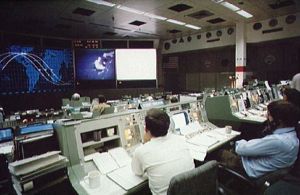 | STS-3 MOCR activity during STS-3 mission Credit: NASA |
 | STS-3 Pilot Fullerton dons anti-g and ejection escape suit (EES) on middeck Credit: NASA |
 | STS-3 Night firing of orbiter Columbia's thrusters Credit: NASA |
 | STS-3 Pilot Fullerton plans menu as packaged food and beverages float around him Credit: NASA |
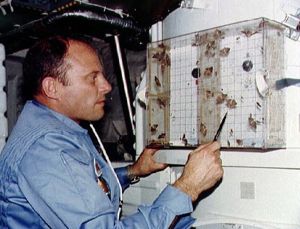 | STS-3 Commander Lousma examines Insect Flight Motion Study Credit: NASA |
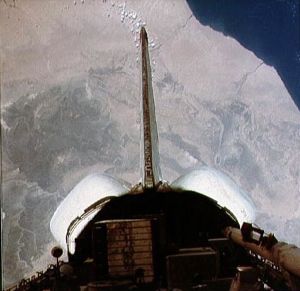 | STS-3 View of the Columbia's aft section while over Morocco's Atlantic Coast Credit: NASA |
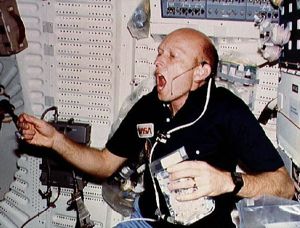 | STS-3 Pilot Fullerton eats on middeck Credit: NASA |
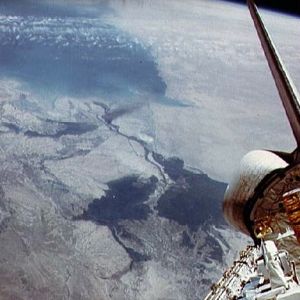 | STS-3 Payload bay, Northern Persian Gulf Region Credit: NASA |
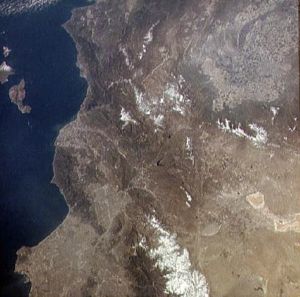 | STS-3 Los Angeles, CA. Credit: NASA |
 | STS-3 Commander Lousma is surrounded by a week's worth of trash on the middeck Credit: NASA |
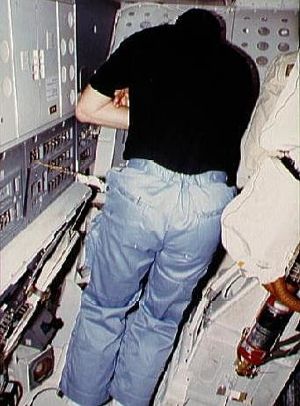 | STS-3 Commander Lousma sleeps on aft flight deck Credit: NASA |
 | STS-3 Earth Limb and Hurricane Clouds over Open Ocean, Location Unknown Credit: NASA |
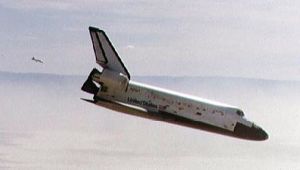 | STS-3 Air-to-air coverage of orbiter inspection during its descent Credit: NASA |
 | STS-3 EMU TV system test Credit: NASA |
1982 March 22 - . 16:00 GMT - . Launch Site: Cape Canaveral. Launch Complex: Cape Canaveral LC39A. Launch Platform: MLP1. LV Family: Shuttle. Launch Vehicle: Space Shuttle.
- STS-3 - . Call Sign: Columbia. Crew: Fullerton, Lousma. Payload: Columbia F03 / OSS-1. Mass: 10,301 kg (22,709 lb). Nation: USA. Related Persons: Fullerton, Lousma. Agency: NASA Houston. Program: STS. Class: Manned. Type: Manned spaceplane. Flight: STS-3. Spacecraft Bus: Shuttle. Spacecraft: Columbia. Duration: 8.00 days. Decay Date: 1982-03-30 . USAF Sat Cat: 13106 . COSPAR: 1982-022A. Apogee: 249 km (154 mi). Perigee: 241 km (149 mi). Inclination: 38.00 deg. Period: 89.40 min. Manned two crew. Payloads: Office of Space Science (OSS) experiments, Monodisperse Latex Reactor (MLR), Electro-phoresis Verification Test (EEVT), Plant Lignification Experiment..
1982 March 23 - .
- STS-3 - Wakeup Song: On the Road Again - . Flight: STS-3. "On the Road Again" by Willie Nelson.
1982 March 24 - .
- STS-3 - Wakeup Song: Marine Corps Hymn - . Flight: STS-3. "Marine Corps Hymn".
1982 March 25 - .
- STS-3 - Wakeup Song: Off We Go Into the Wild Blue Yonder - . Flight: STS-3. "Off We Go Into the Wild Blue Yonder" - The Air Force Song - for the benefit of pilot C. Gordon Fullerton, an Air Force colonel, who commented:"That will get us off to a fast start".
1982 March 26 - .
- STS-3 - Wakeup Song: Sail Away - . Flight: STS-3. "Sail Away" by Christopher Cross while over Madrid..
1982 March 27 - .
- STS-3 - Wakeup Song: I'm Sitting On Top of the World - . Flight: STS-3. "I'm Sitting On Top of the World" sent down by Columbia for the flight control team and the flight team transmitting up"Those Magnificent Men and Their Flying Machines".
1982 March 28 - .
- STS-3 - Wakeup Song: Six Days on the Road and I'm Gonna Make It Home Tonight - .
Flight: STS-3.
"Six Days on the Road and I'm Gonna Make It Home Tonight" by Dave Dudley NASA stretched the lyrics to make it eight days instead of six.."OK, that's good music, Houston" Lousma told capsule communicator Brewster Shaw, who had a radio station make a change in the tape.
1982 March 29 - .
- STS-3 - Wakeup Song: This is My Country - . Flight: STS-3. "This is My Country" uplinked to the crew by CAPCOM Steve Nagil and the crew responded with downlink medley of the"The Air Force Song ("Off We Go Into the Wild Blue Yonder")" and the"Marine Corps Hymn".
1982 March 30 - .
- Landing of STS-3 - . Return Crew: Fullerton, Lousma. Nation: USA. Related Persons: Fullerton, Lousma. Program: STS. Flight: STS-3. First and only landing by a shuttle at White Sands, New Mexico, after weather at Edwards did not permit landing there. STS-3 landed at 16:04 GMT..
Back to top of page
Home - Search - Browse - Alphabetic Index: 0- 1- 2- 3- 4- 5- 6- 7- 8- 9
A- B- C- D- E- F- G- H- I- J- K- L- M- N- O- P- Q- R- S- T- U- V- W- X- Y- Z
© 1997-2019 Mark Wade - Contact
© / Conditions for Use